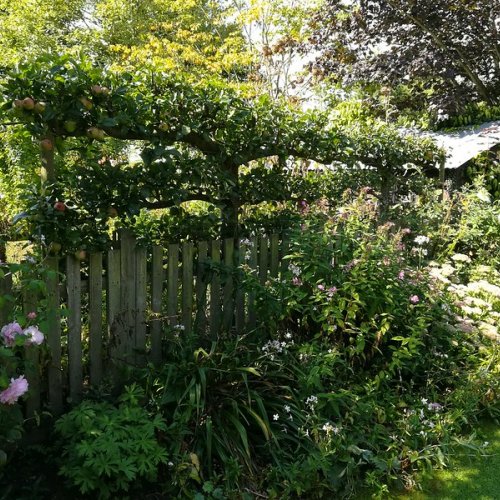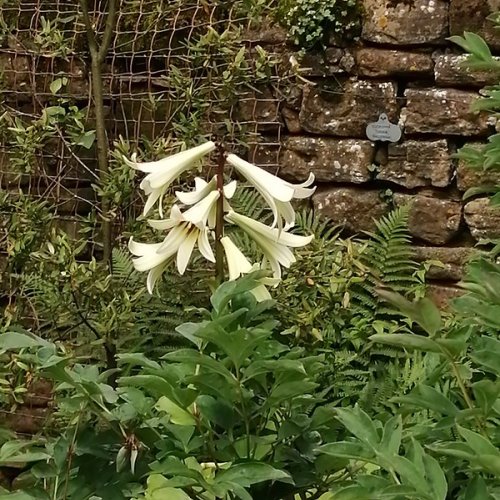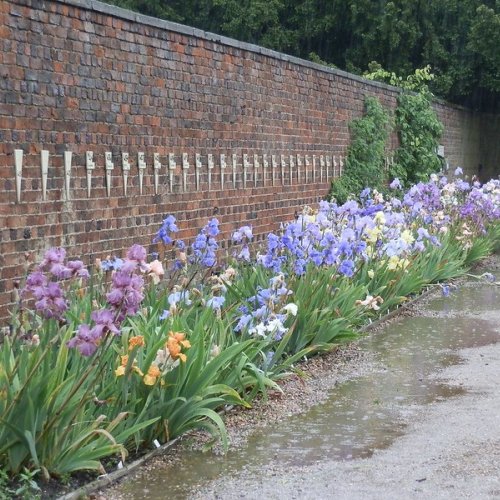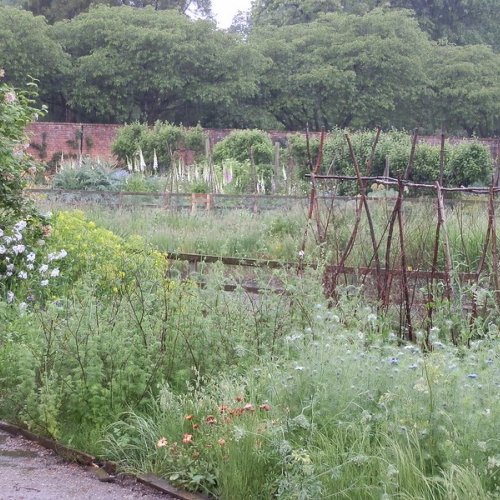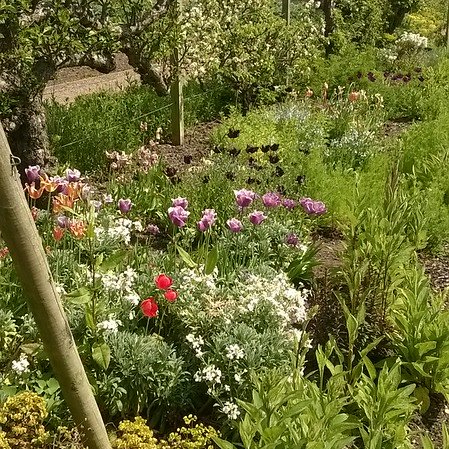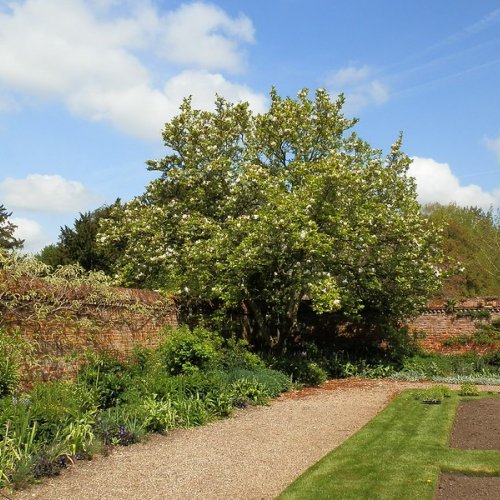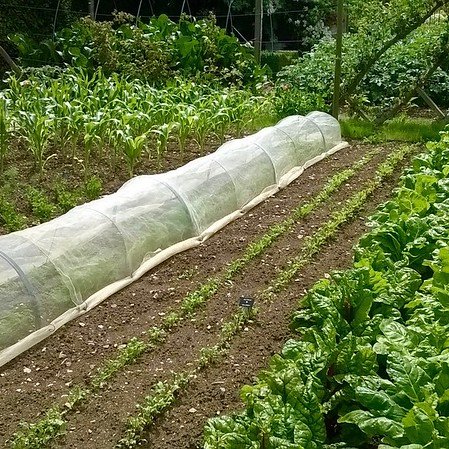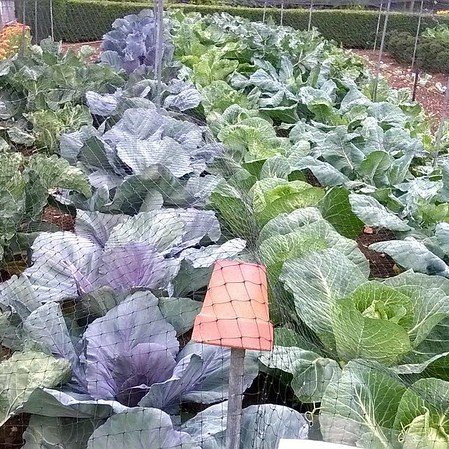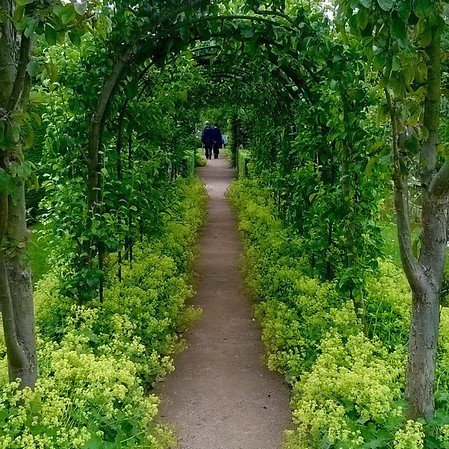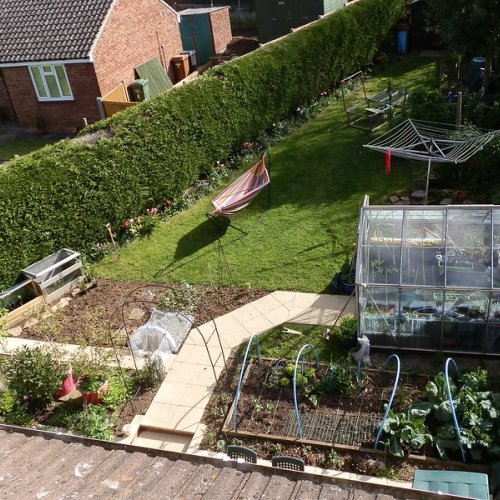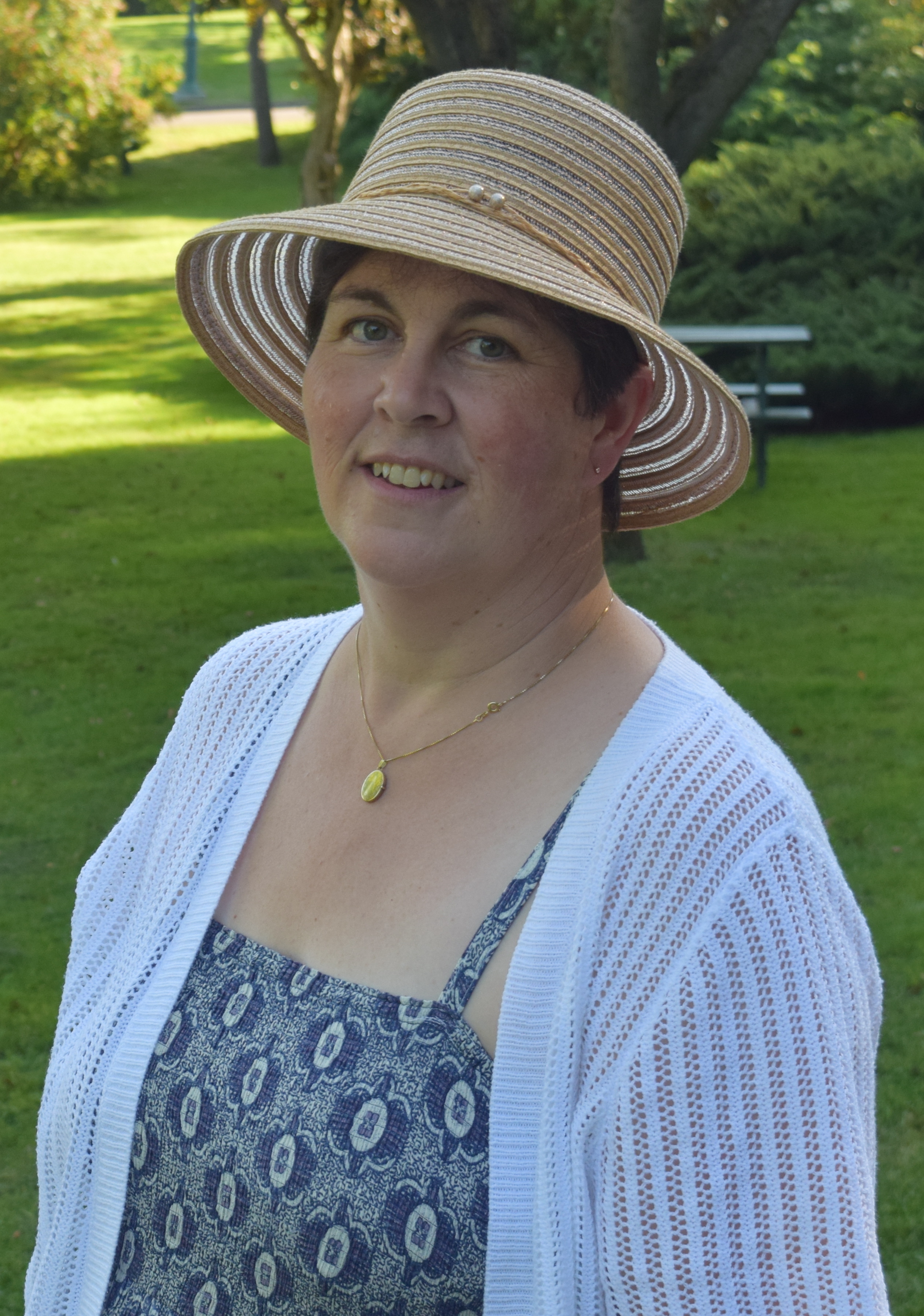Winter is the season of perfect imaginary gardens, in which there are no limits, no harsh realities of weather or pests, no aching backs or nettle stings. There is limitless space and energy and absolutely no disappointments. Anything is possible as I walk along the immaculate paths of the seed catalogues, lusting after the dancing blue heads of woodland mecanopsis, impossible in the reality of my heavy midlands clay. The seasons telescope in my mind as I flit through the pages, from a March greenhouse, bursting with trays and trays of sturdy seedlings, to the April buzz of bees in a storm of apple blossom. July roses bloom with never an aphid in sight and October pumpkins swell as big as Cinderella’s carriage. I can see in my mind’s eye just how my garden will look in the coming months and itch to start planting my carefully stored seeds.
I began my planning in November, working my way through carefully stored packets of seed, discarding the out-of-date, noting down the absent or the empty. This used to be a chaotic event, a huge heap of possibilities mixed up together. The sorting was fun, but it was easy to be overwhelmed by abundance. In my excitement I would order too much, plant more than I could cope with and overlook some varieties until the time for sowing them had passed. The excitement of winter planning would then be tempered by reminders of what I had ‘failed’ to do.
Now I have a large air-tight tub containing a series of heavy-duty envelopes, each full of seed packets, labelled with their month for sowing. These monthly treasure troves begin with a slim packet of chillies and tomatoes for February, through bursting-at-the seams March and April to modest, tender May. Then it’s a skip over to August/September with the overwintering salads and fat packets of broad beans and autumn sowing peas to take me through to early October. My seed store is silent on the subject, but November, December and January are the time for planting garlic and then bare root roses and fruit trees, or it would be if my real garden was not already stuffed to capacity.
Only when I know what I already possess, and have drawn up a shopping list, can I afford to luxuriate in the catalogues’ offers of new delights. I settle myself by the fire, a coffee at my elbow and flanked by the ever-present cats, prepared to dream. When I have reached the limits of my own garden, in my imagination I am Mary Lennox in The Secret Garden and have found an abandoned garden behind high walls. There are ancient roses and twisted fruit trees clinging to rusting pins in the old bricks, which I will prune and tend until they drip with blossom. Beneath their wild abandon, the sharp points of spring bulbs pierce the loam and I can smell the rich dampness of earth as, like Mary, I clear a little space for them to breathe. Hidden here behind my high walls I have as much space as I need in ground and greenhouse to plant my seeds. The sun always shines, unless I wish for gentle summer rain, during which I shelter in a fragrant potting shed with tools neatly arranged on the walls and a welcoming, whistling kettle.
My imaginary garden has been a God-send in recent years, well beyond those winter planning sessions. When my days were full of work and mothering, when my night-time sleep was haunted by the ever-present possibility of another bleary chase behind parental ambulance lights, my walled garden provided a haven and balm for my soul. When I woke in the wee-small-hours to the pounding of failure and inadequacy in my head, I would run for my high walls, pull the sturdy wooden door closed behind me and wander among the roses. The loss of this garden in the depths of my illness, when the circles in my brain could no longer even form the accusatory sentences, marked the lowest point in my life. As I emerged from that darkness, I found that my garden was still there and I walked its paths again, guided by the whispery voices of meditation gurus. I still love my mental retreat space, but on the other side of recovery I am happier to accept that it will never become a reality this side of heaven. I can dream happily through the dark months and emerge in spring to the excitement of my real-world garden and all the challenges and surprises it holds.
She did not know anything about gardening, but the grass seemed so thick in some of the places where the green points were pushing their way through that she thought they did not seem to have enough room to grow. She searched about until she found a rather sharp piece of wood and knelt down and dug and weeded out the weeds and grass until she made nice little clear places around them.
“Now they look as if they could breathe,” she said, after she had finished with the first ones. “I am going to do ever so many more. I’ll do all I can see. If I haven’t time today, I can come tomorrow.”
… without knowing it she was smiling down onto the grass and the pale green points all the time
Frances Hodgson-Burnett, The Secret Garden
What would your perfect garden look like? What would you plant in it? What would you do there?
